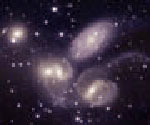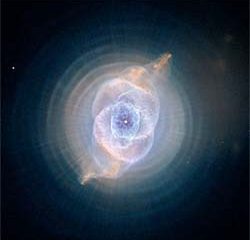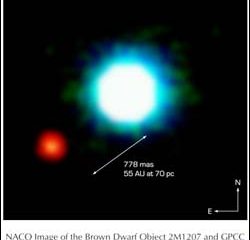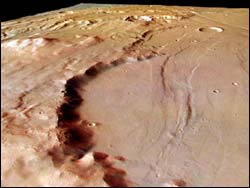Physics and Astronomy
This area deals with the fundamental laws and building blocks of nature and how they interact, the properties and the behavior of matter, and research into space and time and their structures.
innovations-report provides in-depth reports and articles on subjects such as astrophysics, laser technologies, nuclear, quantum, particle and solid-state physics, nanotechnologies, planetary research and findings (Mars, Venus) and developments related to the Hubble Telescope.

"I, RoboNet" – intelligent telescopes survey the violent skies
British astronomers are celebrating a world first that could revolutionise the future of astronomy. They have just begun a project to operate a global network of the world’s biggest robotic telescopes, dubbed ’RoboNet-1.0’ which will be controlled by intelligent software to provide rapid observations of sudden changes in astronomical objects, such as violent Gamma Ray Bursts, or 24-hour surveillance of interesting phenomena. RoboNet is also looking for Earth-like planets, as yet unseen elsewhere

Galactic Ballet Captured by Gemini
A stunning image released by the Gemini Observatory captures the graceful interactions of a galactic ballet, on a stage some 300 million light years away. The clarity of the image is thanks, in part, to an instrument built in the UK, the Gemini Multi-Object Spectrograph (GMOS).
The galaxies, members of a famous troupe called Stephan’s Quintet, are literally tearing each other apart. Their shapes are warped by gravitational interactions occurring over millions of years. Sweeping arches of

Dying star creates fantasy-like sculpture of gas and dust
A new study of a large number of planetary nebulae has revealed that rings, such as those seen here around the Cat’s Eye Nebula, are much more common that thought so far and have been found in at least one third of all planetary nebulae. Although the rings may be the key to explaining the final agonized ‘gasp’ of the dying central star, the mystery behind the Cat’s Eye nebula’s nested Russian doll structure remains largely unsolved.
In this detailed view from the NASA/ESA Hubble Sp

Physicists create artificial molecule on a chip
Using integrated circuit fabrication techniques, a team of researchers from Yale University has bound a single photon to a superconducting device engineered to behave like a single atom, forming an artificial molecule. It’s the first experimental result in a field Yale professors Robert Schoelkopf and Steven Girvin have dubbed Circuit Quantum Electrodynamics.
The superconducting devices can be operated as qubits, the basic element of information storage in the field of quantum

Is This Speck of Light an Exoplanet?
VLT Images and Spectra of Intriguing Object near Young Brown Dwarf
Is this newly discovered feeble point of light the long-sought bona-fide image of an exoplanet?
A research paper by an international team of astronomers provides sound arguments in favour, but the definitive answer is now awaiting further observations.
On several occasions during the past years, astronomical images revealed faint objects, seen near much brighter stars. Some of these have been thought

Solis Planum, Thaumasia region
These images, taken by the High Resolution Stereo Camera (HRSC) on board ESA’s Mars Express spacecraft, show part of a heavily eroded impact crater at Solis Planum, in the Thaumasia region of Mars.
The images were taken during orbit 431 in May 2004 with a ground resolution of approximately 48 metres per pixel. The displayed region is located south of Solis Planum at longitude 271° East and latitude of about 33° South.
The larger eroded impact crater in the lower left of thi